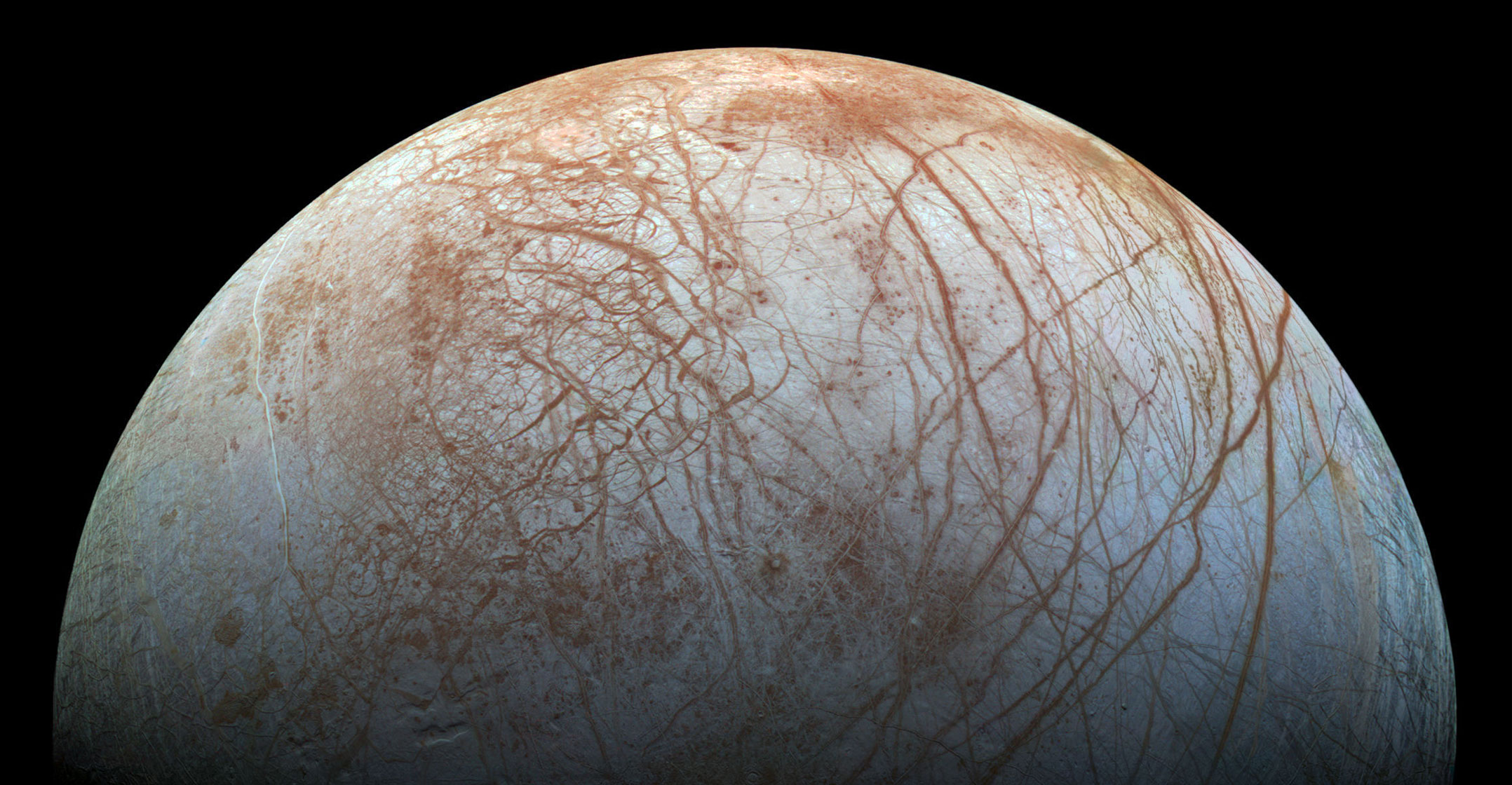 The interior ocean in Jupiter’s moon Europa may be able to sustain life, Nasa scientists believe. Their work is based on computer simulations of the reservoirs below the ice-shell surface of Europa, one of the largest moons in the solar system.
The interior ocean in Jupiter’s moon Europa may be able to sustain life, Nasa scientists believe. Their work is based on computer simulations of the reservoirs below the ice-shell surface of Europa, one of the largest moons in the solar system.
Calculations by scientists at Nasa’s Jet Propulsion Laboratory (JPL) in California indicate this global ocean could have been formed by breakdown of minerals that contain water. Their work, which is not yet peer-reviewed, was presented at the virtual 2020 Goldschmidt geochemistry conference.
The researchers developed their model using data from Nasa’s Galileo mission and the Hubble Space Telescope, which was built by Nasa and the European Space Agency. In 2016, Hubble uncovered tantalising evidence of water vapour plumes erupting from the surface of Europa.
Findings suggest ocean worlds such as Europa can be formed by metamorphism, a change in the composition or structure of rocks by heat, pressure or other natural phenomenon.
The scientists believe heating and increased pressure, possibly caused by natural radioactive processes or tidal movement generated by Jupiter’s gravity, would result in the breakdown of water-containing minerals to release trapped water.
They also found that this ocean would “originally have been mildly acidic, with high concentrations of carbon dioxide, calcium and sulphate”, before becoming “chloride rich”.
‘Quite habitable’
Lead researcher Mohit Melwani Daswani, a geochemist and planetary scientist at JPL, said: “In other words, its composition became more like oceans on Earth. We believe that this ocean could be quite habitable for life.”
He added: “Nasa’s Europa Clipper mission will launch in the next few years, and so our work aims to prepare for the mission, which will investigate Europa’s habitability.
“Our models lead us to think that the oceans in other moons, such as Europa’s neighbour Ganymede, and Saturn’s moon Titan, may also have formed by similar processes.”
As part of the next steps, the researchers want to find out if seafloor volcanoes may have contributed to the evolution of the chloride-rich water on Europa.
Commenting on the research, Steve Mojzsis, a professor of geology at the University of Colorado, who was not involved in the study, said that whether Europa could be habitable boils down to whether it can sustain a flow of electrons which might provide the energy to power life.
“A key aspect that makes a world ‘habitable’ is an intrinsic ability to maintain these chemical disequilibria. Arguably, icy moons lack this ability, so this needs to be tested on any future mission to Europa.”

